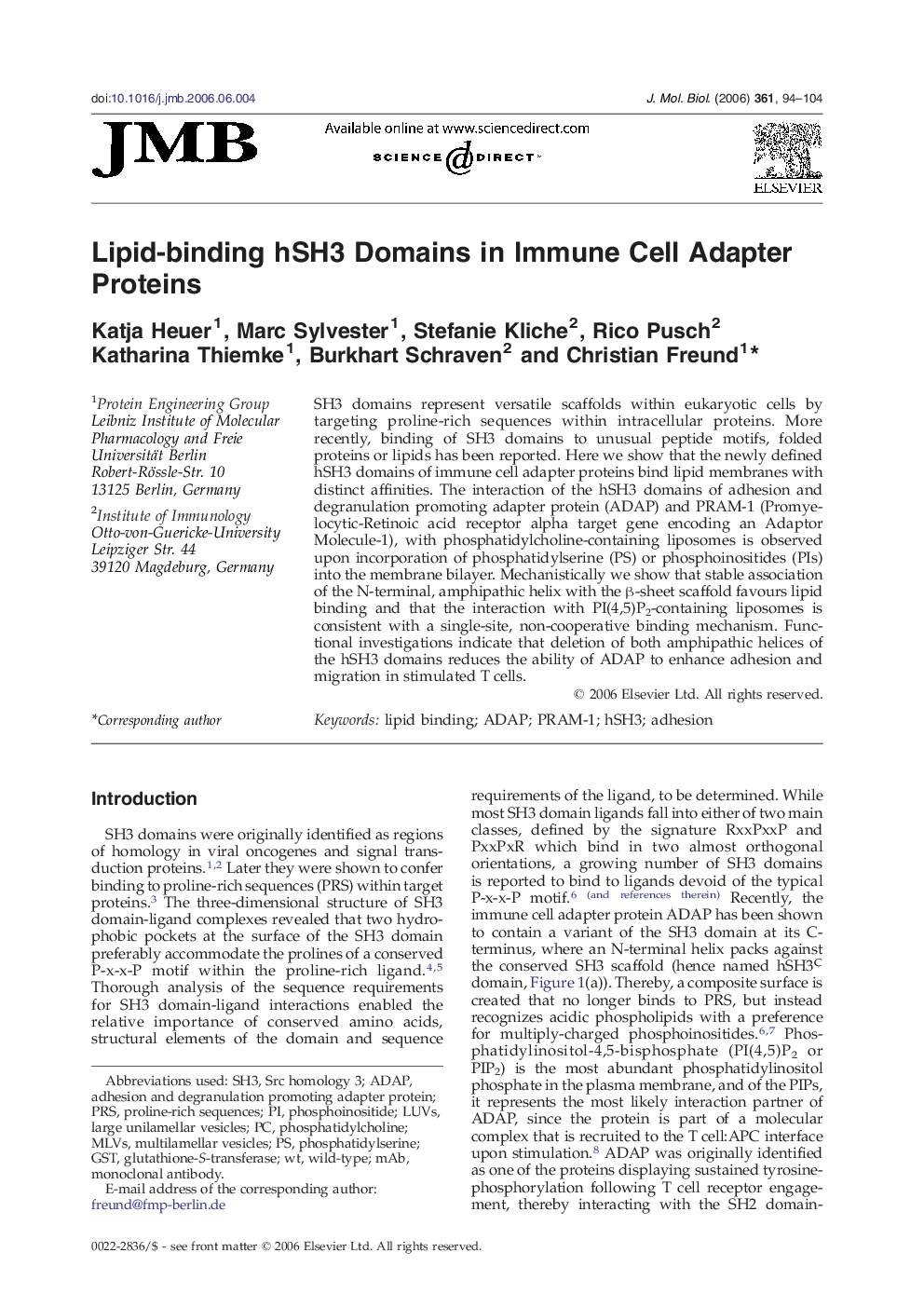| کد مقاله | کد نشریه | سال انتشار | مقاله انگلیسی | نسخه تمام متن |
|---|---|---|---|---|
| 2188985 | 1096192 | 2006 | 11 صفحه PDF | دانلود رایگان |

SH3 domains represent versatile scaffolds within eukaryotic cells by targeting proline-rich sequences within intracellular proteins. More recently, binding of SH3 domains to unusual peptide motifs, folded proteins or lipids has been reported. Here we show that the newly defined hSH3 domains of immune cell adapter proteins bind lipid membranes with distinct affinities. The interaction of the hSH3 domains of adhesion and degranulation promoting adapter protein (ADAP) and PRAM-1 (Promyelocytic-Retinoic acid receptor alpha target gene encoding an Adaptor Molecule-1), with phosphatidylcholine-containing liposomes is observed upon incorporation of phosphatidylserine (PS) or phosphoinositides (PIs) into the membrane bilayer. Mechanistically we show that stable association of the N-terminal, amphipathic helix with the β-sheet scaffold favours lipid binding and that the interaction with PI(4,5)P2-containing liposomes is consistent with a single-site, non-cooperative binding mechanism. Functional investigations indicate that deletion of both amphipathic helices of the hSH3 domains reduces the ability of ADAP to enhance adhesion and migration in stimulated T cells.
Journal: Journal of Molecular Biology - Volume 361, Issue 1, 4 August 2006, Pages 94–104